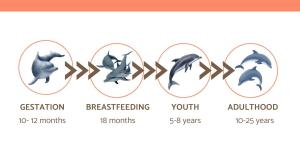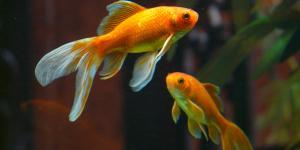How Long Do Sparrows Live? - Lifespan of a Sparrow


Sparrows have a different lifespan in captivity than they do in the wild. There are two birds we know of as sparrows, Old World sparrows and New World Sparrows. They are from the families Passeridae and Passerellidae, respectively. Only Old World sparrows are known as true sparrows and it is these birds we investigate at AnimalWised when we ask how long do sparrows live? True sparrows are native to Europe, Asia and Africa. Introduction of certain species by humans means we can see birds such as the common house sparrow in places as far away as the Americas. We answer our question by looking at the lifespan of a sparrow in the wild and in captivity.
How long do sparrows live in the wild?
Sparrows are songbirds with a simple birdsong. Their plumage coloration is different patterns of brown and gray, with different species having markings of yellow, red and other colors depending on the species. They are mainly granivorous animals as seeds and grains make up the most of their diet. They break open the hard shells of these seeds thanks to their short, curved and hard beak. They will also eat insects and other arthropods, making them omnivorous.
These birds usually live in open habitats, but have adapted well to living in urban areas. This has given rise to the common name of Passer domesticus, the common house sparrow. This is because birds of these species often live in and around houses, as well as industrial buildings such as factories and warehouses. They live in almost any terrestrial habitat, even doing so exceptionally in climactically extreme environments such as California deserts[1].
In general, sparrows are considered long-lived birds, since some species exceed 10 years of life. However, the average life expectancy of wild sparrows is around 3 years of age. This is due to a high mortality rate when they are young. Only about 20% of the youngest individuals manage to reach adulthood. Once they do reach adulthood, the sparrow survival rate in the wild is between 45 and 65%, much higher than young sparrows.
We have the most data on sparrow lifespan with the house sparrow. Although native to Asia, Africa and Europe, it has been introduced globally. Wild house sparrows have been recording reaching up to 13 years of life. There is even a report of an individual that was found dead almost 20 years after being ringed[2]. This is an exceptional case since it is more common for them to have a shorter lifespan and rarely reach 10 years of age.

How long do sparrows live in captivity?
We have already discussed the average life expectancy of sparrows in the wild. We now look at how long sparrows live in captivity. It is common for animals to live longer in captivity than in the wild, although not exclusively. This is because their needs are well met and they are largely protected from potential predators. Sparrows are commonly preyed upon by owls, raccoons and snakes, part of the trophic chain of many wild ecosystems. We do need to be careful with domestic cats as these are their main predator.
There have been recorded instances of house sparrows living as long as 23 years of age in captivity, but this is also an exceptional sparrow lifespan. Generally speaking the average life expectancy of a sparrow in captivity is between 12 and 14 years of age.
Although we can state the average lifespan of house sparrows, there is less data for other species of true sparrows. However, they are not the only sparrow species kept in captivity:
- Northern grey-headed sparrow (Passer griseus): native to Africa and has a lifespan of about 11 years .
- Sudan golden sparrow (Passer luteus): also native to Africa and usually lives between 9 and 14 years .
Despite having a long life expectancy in captivity, this does not mean they have the best quality of life. Birds in captivity may live longer, but they are not able to fly, explore or interact with other birds. This last factor is particularly important since house sparrows are very social animals. There are also reports that sparrows in captivity are developing immunity problems[3]. Depriving wild birds of their freedom is something which should generally be avoided.
In the case where you find an injured bird, you can help them by taking them to a veterinarian or a wildlife recovery center. They will advise you on the best course of action in caring for the bird and helping them return to the wild. If it is not possible to release it, they will also tell you how to care for it to give it a good quality of life in captivity. This will include allowing them out of the cage on a daily basis.
If you do discover an injured bird of this species, take a look at our article on how to care for a house sparrow until you can contact a recovery center.

Factors that threaten the life expectancy of sparrows
The International Union for Conservation of Nature (IUCN) has registered all sparrow species in the category of least concern, with the exception of the following species:
- Abd al-Kuri sparrow (Passer hemileucus): endemic to the Yemeni Island of the same name, it is classified as vulnerable because it is affected by hunting and events such as cyclones.
- Italian sparrow (Passer italiae): native to Italy, France, Greece and Austria, among other countries, it is also classified as vulnerable. It is not known with certainty what is affecting this species, although it is estimated that changes in the habitat and pollution are causing population decline.
Although most of the sparrow species are considered in the category of least concern, it does not mean that their populations are not affected. Many are declining, as is the case of the house sparrow. These decreases are attributed to the fact that the prey animals typical of these birds have also experienced population decrease. These animals include the invertebrates which are especially important for rearing chicks.
There are also reports that sparrow chicks are born with a weakened physical condition. A lack of resources also significantly affects altricial development of sparrow chicks[4]. This can result in them not fledging correctly, usually resulting in death.
These issues appear to be directly influenced by the increased use of pesticides and herbicides in crops. The extension of cereal planting that decreases the type of food that sparrows consume may also be a factor. However, more studies are required since urban populations of house sparrows are also experiencing severe declines.
Are there sparrow conservation plans?
In the United Kingdom, the house sparrow was classified as almost threatened by the IUCN in 2002. For this reason, strategies have been proposed such as the improvement of parks and urban green areas to reduce the factors that threaten the life expectancy of sparrows.
If you want to read similar articles to How Long Do Sparrows Live? - Lifespan of a Sparrow, we recommend you visit our Facts about the animal kingdom category.
1. Hanson, H. E., Mathews, N. S., Hauber, M. E., & Martin, L. B. (2020). The house sparrow in the service of basic and applied biology. eLife, 9, e52803.
https://doi.org/10.7554/eLife.52803
2. European Union for the ringing of Birds (EURING). (2015). House Sparrow. Retrieved from: https://euring.org/data-and-codes/longevity-list/house-sparrow
3. Love, A. C., Lovern, M. B., & DuRant, S. E. (2017). Captivity influences immune responses, stress endocrinology, and organ size in house sparrows (Passer domesticus). General and comparative endocrinology, 252, 18–26.
https://doi.org/10.1016/j.ygcen.2017.07.014
4. Killpack, T. L., & Karasov, W. H. (2012). Growth and development of house sparrows (Passer domesticus) in response to chronic food restriction throughout the nestling period. The Journal of experimental biology, 215(Pt 11), 1806–1815.
https://doi.org/10.1242/jeb.066316
- Camfield, A. (2004). Passeridae . Animal Diversity Web. Available at: https://animaldiversity.org/accounts/Passeridae/
- IUCN (2023). The IUCN Red List of Threatened Species. Version 2022-2. Available at: https://www.iucnredlist.org







